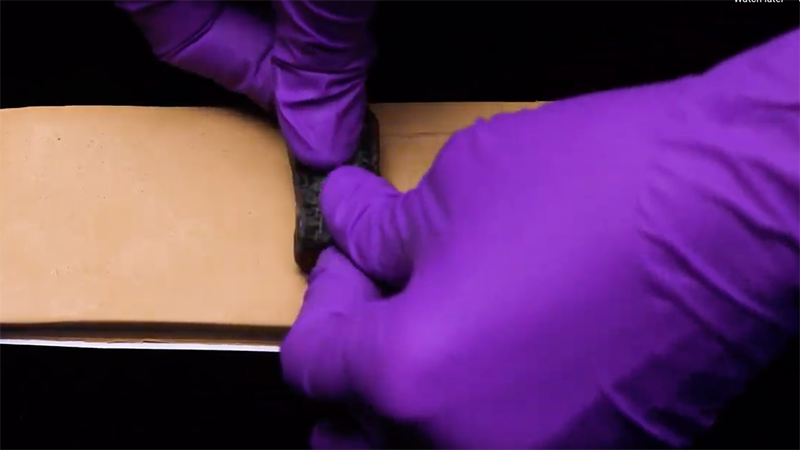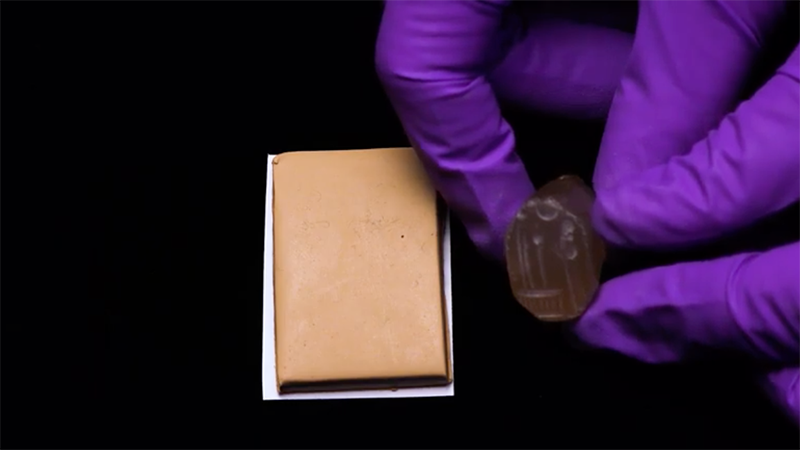About
Seals: An Overview
Produced in different shapes, sizes, and materials, cylinder and stamp seals are some of the most distinctive artifacts from the ancient Near East. Both cylinder and stamp seals were used to perform the administrative transaction of goods, as well as signal ownership, obligation, or authority. As administrative tools, seals have their origin in the sixth millennium BCE in the Syro-Mesopotamian heartland. Stamp seals of geometric shapes are the earliest documented seals. Cylindrically-shaped seals were introduced at the same time as proto-cuneiform writing in the middle of the fourth millennium BCE.
Seals had multifunctional uses. Besides being administrative tools, seals were also associated with individuals as markers of personal and social identity (Ameri et al. 2018). During the Early Dynastic period (2900–2300 BCE), seals were either worn on pins to secure garments or hung from these pins as part of a string of beads. Such representation provides invaluable information, as it visually shows that a seal was a personal item associated with its owner and how a seal was used for its apotropaic and amuletic functions to avert evil or bad luck (Collon 2005, 101). It is possible that the apotropaic function began with early animal-shaped stamp seals produced in the sixth millennium BCE (Gorelick 1981). The apotropaic function of the seal is more explicit on the cylinder seals depicting birds or animal-headed demons from the Mitanni period, which were probably intended to protect the wearer (Porada 1993).
How were seals made?
Seals of various shapes were carved from different organic and inorganic materials. Stone (e.g., marble, limestone, lapis lazuli, agate, chalcedony, hematite, and serpentine) was the most common medium used to carve seals. Metals (e.g., copper, bronze, iron, silver, and gold), organic substances (e.g., bone and wood), and other substances (e.g., faience and glass) were also used.
Stamp seals were perforated on the back or through the seal and may have held an attachment. Cylinder seals were designed with various techniques. Some were perforated through vertically to receive different types of attachments. Other examples had handles carved, had V shapes perforated on both ends of the seal using loop bores, or had metal cap attachments. Often seals had deep, vertical grooves, creating three panels. These seals were rolled over clay, and each panel section was used as a distinctive stamp.
The surfaces of the seals were carefully carved with a large array of motifs that were intricately detailed and sophisticated. Producing such detail would not have been possible using simple drills or graver tools alone. Based on studies conducted on the carvings, abrasives, such as emery or sand, were used to achieve the detail by continuously rubbing them on the surface of the seal.
Seals existed throughout the ancient Near East (Mesopotamia, Levant, Anatolia, and ancient Iran), and the practice spread to the neighboring regions. Seals deriving from archaeological excavations have been found in locations such as administrative buildings, palaces, temples, and burial sites. These findings underline the wide use of seals by members of different social classes. Stamp and cylinder seals were impressed or rolled onto lumps of clay that were used to close jars, doors, and baskets, to seal legal transactions, and to impress over tablets.
The seals housed at the Freer and Sackler lack specific geographical context. Their shapes and motifs are similar to types found throughout the ancient Near Eastern region proper. Other seals may have originated from Cyprus, Egypt, and the Bactrian area.



